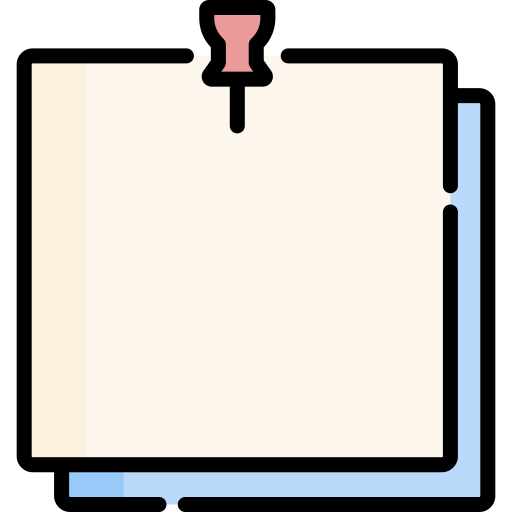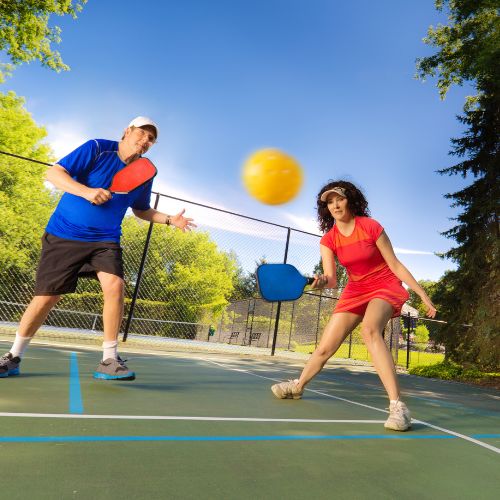There is a unique zone that can only be found in pickleball courts. This unique pickleball zone, known as the kitchen or non-volley zone, can be quite confusing for players who are new to the game. So, what is the kitchen in pickleball? And why did they decide to call it that in the first place?
In this article, we talk about what the kitchen is in pickleball. We also list down a few things that you need to know about this unique zone.
What Is the Kitchen in Pickleball?
The kitchen, which was coined in the official 1984 rulebook as the “non-volley zone” (NVZ), is the name of the area found in the middle of a pickleball court.
No one knows when the term “kitchen” was first used, but pickleball players prefer to use this term because it is easier to remember and pronounce. To this day, the newest revisions of the rulebook still use “non-volley zone” as the zone’s official name, while acknowledging that “kitchen” is more commonly used by players.
What Is the Non-Volley Zone in Pickleball?
The “non-volley zone” in pickleball is the official name for the kitchen. There is no difference between the kitchen and the non-volley zone aside from the terms.
What Is a Volley in Pickleball?
A volley is when you strike the pickleball directly on a return without letting it bounce on your court.
Players are not allowed to volley in the kitchen. They cannot land their serves in the kitchen either. Doing any of these two will result in a fault. But we’ll talk more on that later.
Why Is It Called the Kitchen in Pickleball?
There are many theories about why the non-volley zone is also called the “kitchen”.
One famous theory is that the term was taken from the game Shuffleboard, which has a similar zone. A shuffleboard game comprises different scoring zones, and one of them is called the “kitchen” or the “10-off area”. If landed on, the kitchen deducts 10 points from your score.
The kitchen in shuffleboard is basically a zone where no one wants to land. In pickleball, the non-volley zone is similar in that some actions are restricted on it. So, this might be why pickleball players decided to call it the “kitchen” as well.
Another simpler theory is that the three inventors of pickleball, who were dads, wanted the zone to have a quirky name. They decided to name it the ” kitchen” instead of the boring and lengthy “non-volley zone”. I mean, who among us has never been yelled at to “stop bouncing balls around the kitchen!” before?
Why Does Pickleball Have a Kitchen?
Pickleball courts are the same size as badminton courts, which makes them smaller than tennis courts. On top of that, the net is much shorter in pickleball than in badminton. So, players can easily stand close to the net and smash or volley every single ball that comes their way. Volleys and smashes in pickleball are quite difficult to counter, so you’re almost always guaranteed a winning shot every single time.
As you might imagine, this gives players an unfair advantage. Not only that, but it makes games short, predictable, and boring to watch.
To prevent this, the Non-Volley Zone or Kitchen was added to pickleball courts. The zone avoids hurried rallies and unplayable gaming tactics. It guarantees that everyone will have a fun and fair pickleball game. And, it adds a unique level of strategy to pickleball that isn’t found in other court sports like tennis or badminton.
Pickleball Kitchen Size: How Big Is the Kitchen
The entire kitchen zone of a pickleball court spans 14 feet by 20 feet. But the net in the middle of the court divides it into two sections—one for each side of the court. So, each player has a kitchen that’s 7 feet by 20 feet in size.
This is enough space to force players to play a bit further back from the net, which encourages longer rallies.
Pickleball Kitchen: Rules To Know
Pickleball is a relatively new sport, having gained widespread popularity only in the last few years. So, it doesn’t come as a shock that not everyone knows about the kitchen and the rules associated with it.
The USA Pickleball Association (USAPA) implemented the following rules that every player needs to be aware of.
- You cannot volley within the non-volley zone, as the name states.
- When volleying, no part of your body, equipment, or clothing should come into contact with any part of the zone, including the lines.
- For wheelchair users, the front (smaller) wheels are allowed to touch the zone.
- If you are inside the zone and intend to do a volley, you need to first step both feet outside the kitchen zone.
- When serving, you must aim crosscourt, towards your opponent’s service area. Serves that land in the non-volley zone are considered out.
- Even if the ball is dead, you are not permitted to enter the NVZ after volleying, even if momentum pushes you into the zone.
Can You Step in the Kitchen in Pickleball?
You can step in the kitchen zone at any time during a pickleball game, with a couple of exceptions. You get a violation when:
- You are volleying and you are in the kitchen zone.
- Your momentum after volleying pushes you into the kitchen.
- You are volleying even if one foot is outside the kitchen (you must have both feet outside the kitchen zone).
- Any part of your body—including clothing, gear, and equipment—touches the kitchen zone.
When Can You Step Into the Kitchen in Pickleball?
You can step in the kitchen as often as you please, at any other time during a match. Just not while you are volleying. You can hit a ball while inside the non-volley zone, provided that you first let it bounce before hitting it, or else it is a violation.
How The Kitchen Is Played In Different Skill Levels
The kitchen is viewed differently by players of different skill levels in pickleball.
For beginners who aren’t too familiar with the rules of pickleball, the kitchen can be a scary place. There are a lot of rules associated with the zone that aren’t found in other sports. But this limitation does force them to read up more on the game’s mechanics. So, in a way, the kitchen helps beginners learn faster, and play better and more carefully to avoid making too many mistakes.
The more experienced players, on the other hand, are able to use the kitchen as part of their strategy. In fact, advanced-level players will get into the kitchen zone to pull off exciting moves throughout the course of the game. At its core, pickleball is a strategy game. You can’t just plow through your opponents using brute force. More experienced players know this. And they know that the kitchen can be a great asset if you know how to use it.
With this, players are constantly inventing different moves and strategies to make use of the NVZ. Some of these moves have been adopted by other players and incorporated into their playing styles. These moves can help you win games when mixed in with good fundamentals.
What Moves Can You Pull Off Using the Kitchen Zone?
The kitchen is an important part of the game and can be used to your advantage. Here are a couple of moves that you can pull off using the kitchen zone:
Dinks
Since the kitchen zone stops players from smashing the ball near the net, you can simply “dink” it in instead. A dink is softer than a volley. It is a well-controlled shot that’s aimed to land near the opponent’s side of the net, inside the kitchen zone.
Since your opponent cannot volley the ball, they are forced to let it bounce first. This puts your opponent in a difficult position.
You can use this shot at unexpected times throughout the course of the game to keep your opponents off guard. Learn how to hit a dink shot and other types of pickleball hitting techniques by checking out our other article right here.
The Erne
The Erne shot, popularized by Erne Perry, is a difficult shot to pull off. It requires you to go outside the sideline of the kitchen zone. Once out, you can then volley the ball. You might ask: “Wait, isn’t that illegal?”. It actually isn’t.
The kitchen is enclosed by the kitchen line and the sideline. So, the area outside of the court beside the kitchen is not considered part of the kitchen. Because of that, you can volley the ball as you please.
Just remember not to accidentally go beyond your side of the net or hit the net itself in the process. The Erne is a pretty difficult and risky shot. If your opponent manages to counter it, you might not be able to get back into position in time. You will be caught out of position, which will give your opponent an easy scoring opportunity.
Don’t be Afraid of the Kitchen
The kitchen is part and parcel of pickleball. Don’t view the non-volley zone as a restrictive zone. Instead, use it as a guide and a learning opportunity.
Position yourself well and pull off high-risk hits like the Erne and dinks. Remember, by learning the ins and outs of the kitchen—and through practice—you can make the kitchen your friend, not your enemy.




































